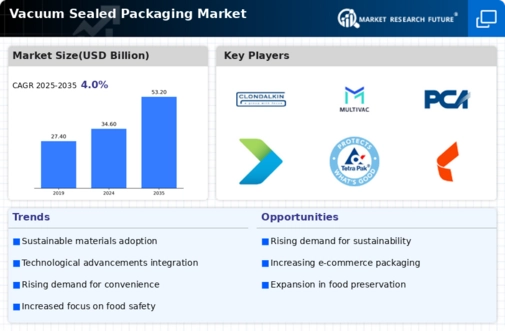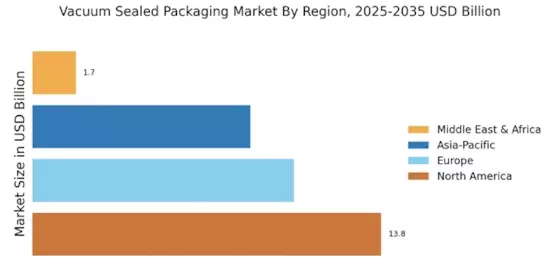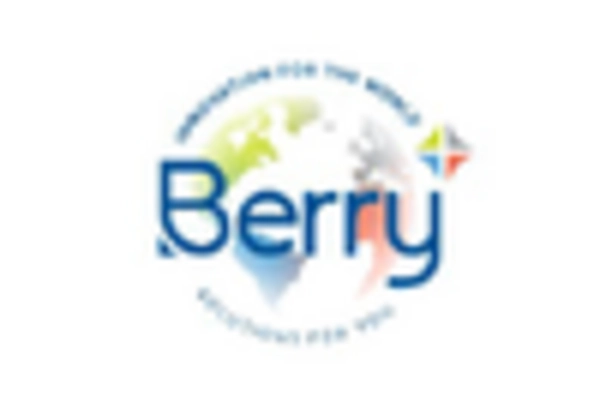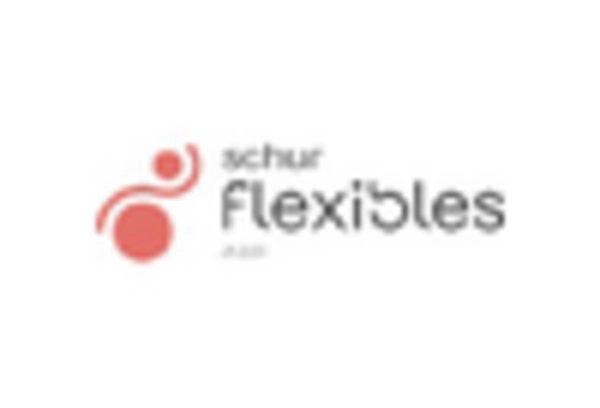Increased Focus on Sustainability
The Vacuum Sealed Packaging Market is witnessing a shift towards sustainability, as both consumers and manufacturers prioritize eco-friendly practices. The demand for recyclable and biodegradable materials is on the rise, prompting companies to innovate in their packaging solutions. Vacuum sealing can contribute to sustainability efforts by reducing food waste and minimizing the carbon footprint associated with food spoilage. Recent studies suggest that sustainable packaging options are becoming a key factor in consumer purchasing decisions, with many willing to pay a premium for environmentally friendly products. This growing emphasis on sustainability is likely to drive the adoption of vacuum sealed packaging, as businesses seek to align with consumer values and regulatory requirements.
Rising Demand for Food Preservation
The Vacuum Sealed Packaging Market is experiencing a notable increase in demand for food preservation solutions. As consumers become more health-conscious, the need for longer shelf life and reduced food waste is paramount. Vacuum sealing effectively extends the freshness of perishable goods, which is particularly appealing in regions with high food spoilage rates. According to recent data, the food segment accounts for a substantial share of the vacuum packaging market, driven by the growing preference for ready-to-eat meals and convenience foods. This trend is likely to continue, as more consumers seek efficient storage methods that maintain food quality. The rising awareness of food safety and hygiene further propels the adoption of vacuum sealing technologies, making it a critical driver in the market.
Expansion of the Pharmaceutical Sector
The Vacuum Sealed Packaging Market is also experiencing growth due to the expansion of the pharmaceutical sector. As the demand for pharmaceuticals continues to rise, the need for secure and sterile packaging solutions becomes increasingly critical. Vacuum sealing provides an effective method for preserving the integrity of medical products, ensuring they remain uncontaminated and effective throughout their shelf life. Recent data indicates that the pharmaceutical packaging segment is projected to grow significantly, driven by the increasing prevalence of chronic diseases and the need for efficient distribution methods. This trend suggests that vacuum sealed packaging will play a vital role in meeting the stringent requirements of the pharmaceutical industry, further propelling market growth.
Growth in E-commerce and Online Retail
The Vacuum Sealed Packaging Market is significantly influenced by the rapid growth of e-commerce and online retail platforms. As more consumers turn to online shopping for groceries and other products, the need for effective packaging solutions that ensure product integrity during transit becomes increasingly important. Vacuum sealing offers a reliable method to protect items from damage and spoilage, thereby enhancing customer satisfaction. Recent statistics indicate that the e-commerce sector has seen exponential growth, with a substantial portion of this growth attributed to food and beverage sales. This shift in consumer purchasing behavior is likely to drive demand for vacuum sealed packaging, as retailers seek to optimize their supply chains and reduce returns due to damaged goods.
Technological Innovations in Packaging
The Vacuum Sealed Packaging Market is benefiting from ongoing technological innovations that enhance packaging efficiency and effectiveness. Advances in materials science have led to the development of more durable and flexible films that improve the vacuum sealing process. These innovations not only extend the shelf life of products but also reduce the environmental impact of packaging waste. Furthermore, the integration of smart packaging technologies, such as sensors that monitor freshness, is gaining traction. This trend is supported by data indicating that consumers are increasingly interested in products that utilize advanced packaging solutions. As technology continues to evolve, it is expected that the vacuum sealed packaging market will expand, driven by the demand for smarter, more sustainable packaging options.


















Leave a Comment